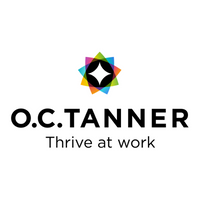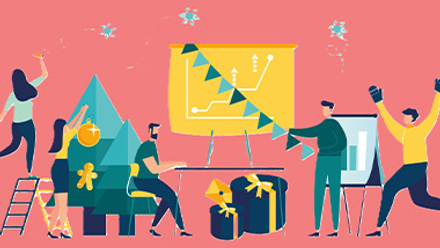How to give employee awards that actually mean something
A symbolic award has an intrinsic value that exceeds that of a disposable or generic item, and when used as part of a reward and recognition programme, such an award can amplify the effects of appreciation.
In fact, when employees receive awards with relevant symbolic meaning, it positively affects connection, great work and retention. Here’s why symbolic awards are so important and how you can go about incorporating them into recognition strategy.
The importance of symbols
The power of symbols is evident in everyday life. Their impact lies in what they mean and represent which, in turn, creates memorable moments and powerful connections between the givers and the receivers.
Take, for example, a child who spends time crafting a personalised heart bracelet for their mother on Mother’s Day. The monetary value of the bracelet is minimal and yet the symbolic value is priceless with the experience of receiving the item likely remembered by the mother forever.
Employees who receive recognition with a symbolic award are three times more likely to remember the occasion, and 358% more likely to provide substantial details about the recognition event.
In contrast, generic awards such as impersonal certificates, nondescript plaques and plain trophies just don’t have the same impact, with the recognition moment less likely to be remembered.
The power of symbolism at bringing people together is highlighted in O.C. Tanner’s 2023 Global Culture Report, which reveals that receiving a symbolic award increases the employee’s connection with their team by 397%, their leader by 281%, and their organisation by 429%. On the flipside, when a career recognition experience omits a symbolic award, the probability of connection to each decreases.
Symbolism impacts great work and retention
The use of symbolism also increases the likelihood of great work (defined as above-and-beyond work or work that makes a difference people love). This is even the case for long-serving employees, which goes against the trend as great work typically falls with tenure. Plus, the odds of employee retention improve within the first year if employees receive symbolic awards.
Incorporating symbolic awards into recognition
Importantly, symbolic awards should be given early into employees’ careers, and not solely to those with five years or more service. This is because early symbolic awards help employees to more readily connect to the organisation’s culture and history.
They also enrich the entire employee experience and lead to a sustained impact on business results. So including symbolic awards during onboarding is key, as well as in the first 30 days of employment and then at the one and three year celebrations. This should be in addition to the standard five, 10 and 15 years-of-service recognition (and every five years subsequently).
It’s also important to ditch generic trophies and plaques as they deliver few, if any positive business results. O.C. Tanner’s latest research reveals that giving symbolic awards is 283% more likely to lead to a thriving culture. In comparison, giving a generic trophy has a negligible impact on culture. Finally, reward professionals must ensure that the presentation of a symbolic award forms part of a memorable recognition experience. After all, putting the time and effort into manufacturing an impressive award can be undone, and even do more harm than good, if the ‘ceremony’ is low key and impersonal.
Recognition is most effective when it’s timely (not given months after the achievement), points to a specific achievement/effort and is personalised to the recipient. The recognition moment should also ideally include the employee’s peers and leaders and be connected to organisational purpose.
Amplifying recognition experience
Employees are motivated by symbolic awards far more than generic and disposable awards, amplifying the impact of recognition experiences. And using symbolism from the moment an employee joins helps them to feel important and a sense of belonging early on.
Supplied by REBA Associate Member, O. C. Tanner
Giving teams the integrated tools they need when, where and how they need them.








